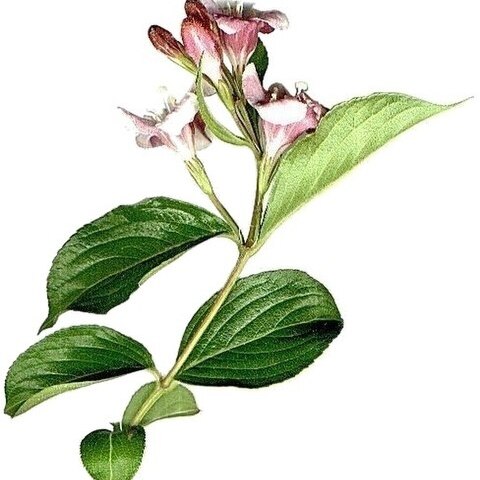Shrub, up to 1 m high; sparsely hairy. Stems scandent with prominent internodes. Leaves drooping, petiolate; blade ovate to broadly ovate, up to 70 x 35 mm, base rounded, apex rounded or broadly acuminate, margins entire, flat, pubescent on both surfaces. Flowers: in 1-4-flowered cymes, crowding towards tops of branchlets; bracts linear, often curved; corolla circumscissile at base, falling as a whole, ± 30 mm long, bluish purple; Feb.-Sep.
Shrub, scrambler, up to 1 m high, unarmed, hairy. Flowers in many-flowered, loose cymes; flowers long-pedicelled. Outer sepals narrow, oblong, broadened towards apex.. Bracts linear, often curved. Flowers bluish purple.
Perennial shrub, dwarf shrub or herb, 0.25-1.00 m high. Inflorescence many-flowered. Sepals outer ones broadened towards apex. Style base glabrous. Flowering time Feb.-Dec. Capsule slightly longer than calyx when ripe.
Sprawling, shortly hairy shrub to 2 m. Leaves opposite, ovate, often obtuse. Flowers in lax axillary cymes, mauve to blue; bracts subspathulate, glandular-hairy.

